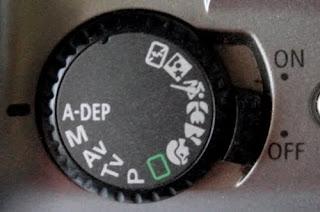Chiaroscuro. What does that mean? What is it and how does it apply to photography? More importantly, what does that have to do with adding depth?
Chiaroscuro is the term used in art for the strong contrast between lights and darks, or highlights and shadows. That’s a generalization of the term, but serves the purpose. By taking that definition, we can understand it to mean contrasting your light areas and shadow areas. Here's an example-

The Matchmaker by Gerrit Van Honthorst
Have you ever noticed a photo taken with a large blast of light? It generally appears flat and lacks contrast. It becomes more noticeable in portraits, especially in shots taken with a built in flash.
Built in flash is about the biggest mistake a photographer can make! When you blast the on camera flash straight on, it takes away the shadows, making the face flat and featureless. Shooting anything with only frontal lighting will make things dull.
The old Dutch Masters, Golden Age painters like Rembrandt, Vermeer, Hals, Van Honthorst, and Cuyp used chiaroscuro to provide ambiance and reality to their works. If you ever view any of the Dutch masters’ works, you will notice the play of light and shadow. Observe the way the shadows that seem to dance about the image. Notice how the way they worked the light into a scene brought depth and dimension to their work. Notice how your eye is drawn to certain parts of the art you are viewing. It feels almost as if you are compelled to look there! Notice, also how the image lighting creates a sense of space and depth, the space seems open or tight depending on the lighting, the bodies and faces seem almost alive in the shadows and lighting.
Chiaroscuro, the Dutch weren’t the first ones to use it, nor were they the only ones, but it became a hallmark of the Dutch Golden Age of Painting. They even named a style of portrait lighting after Rembrandt!
To give you an idea of its role in photography, I’ve added a couple photos to demonstrate.

Now notice how the back-lit image is alive with depth.

Another shot showing some depth to it.
In the images above, you can see how the light diminishes as you get closer to the camera. Notice how the fingers have lighting on the camera side, as does the face, yet the shadows are stronger there. You get a sense of depth from the relationship between the light and the shadows. Although these pics aren't the best examples, they give you an idea of depth and how to create it.
The next time you are taking a photo, stop, visualize, and look for the play of light and shadow. When you see the combination that gives you the shot you visualized, shoot it. Take more and enjoy the freedom of seeing something different and being open to it. When you get home and load your images, you’ll find some good pics, probably some that aren’t so good, and maybe you’ll find something that stops you in your tracks.
Remember, chiaroscuro occurs naturally, but can be created. Using reflectors, flashes, and shade you can create some great pics without too much difficulty.
Enjoy the weekend, get lots of pics, and have fun!
Ciao!

